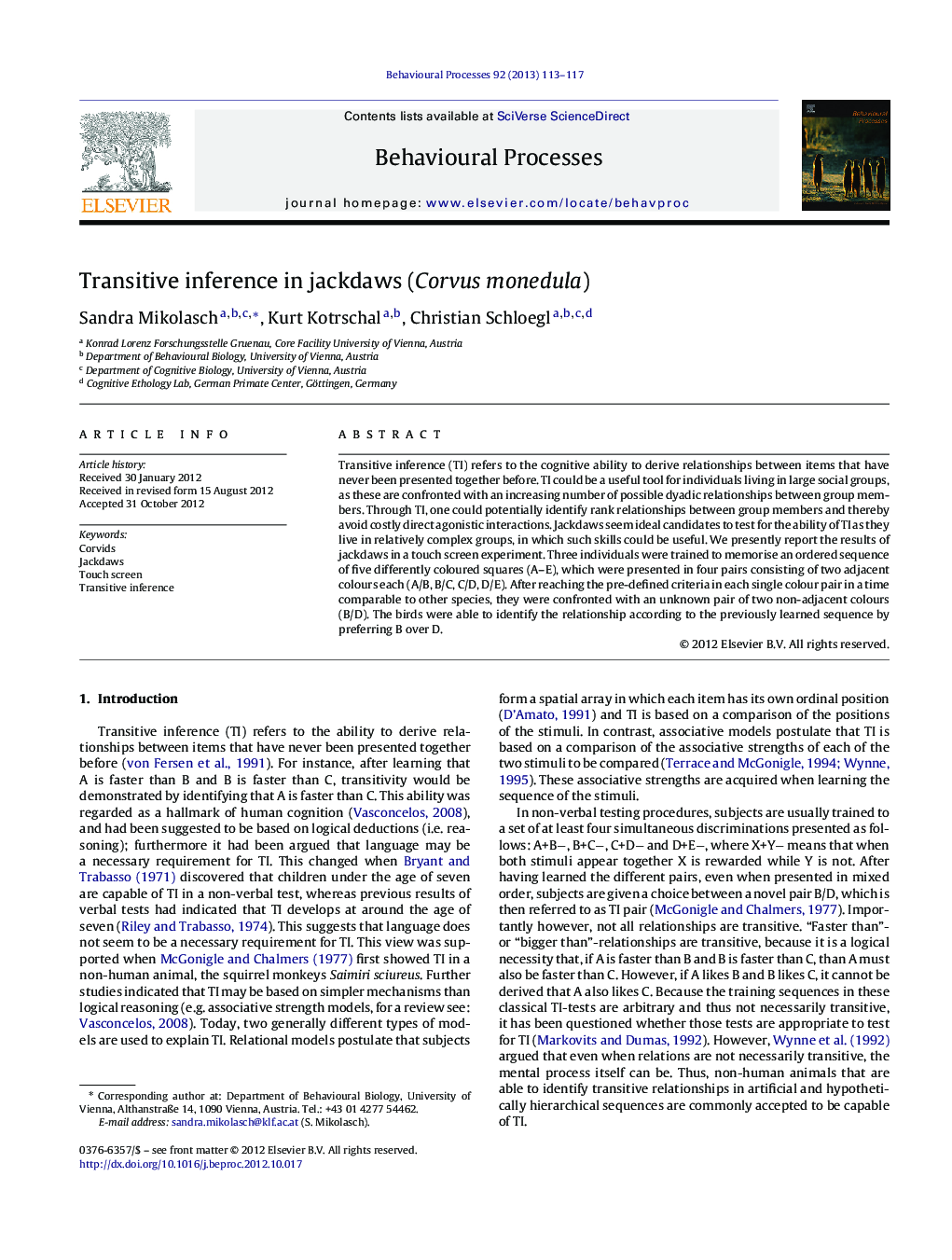| Article ID | Journal | Published Year | Pages | File Type |
|---|---|---|---|---|
| 2426958 | Behavioural Processes | 2013 | 5 Pages |
Transitive inference (TI) refers to the cognitive ability to derive relationships between items that have never been presented together before. TI could be a useful tool for individuals living in large social groups, as these are confronted with an increasing number of possible dyadic relationships between group members. Through TI, one could potentially identify rank relationships between group members and thereby avoid costly direct agonistic interactions. Jackdaws seem ideal candidates to test for the ability of TI as they live in relatively complex groups, in which such skills could be useful. We presently report the results of jackdaws in a touch screen experiment. Three individuals were trained to memorise an ordered sequence of five differently coloured squares (A–E), which were presented in four pairs consisting of two adjacent colours each (A/B, B/C, C/D, D/E). After reaching the pre-defined criteria in each single colour pair in a time comparable to other species, they were confronted with an unknown pair of two non-adjacent colours (B/D). The birds were able to identify the relationship according to the previously learned sequence by preferring B over D.
► Jackdaws learned a hypothetical hierarchical list of five differently coloured squares (A–E). ► During training, only adjacent colours were presented at a time (A/B, B/C, C/D, D/E). ► In the test, birds were confronted with two non-adjacent colours (B/D). ► Jackdaws significantly preferred B over D. ► The data suggest that jackdaws are capable of transitive inference.
